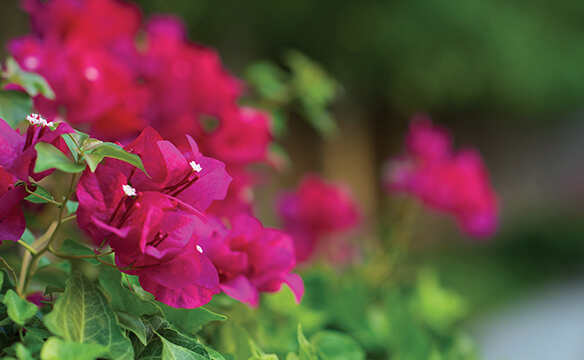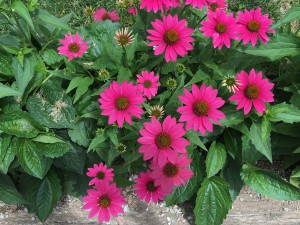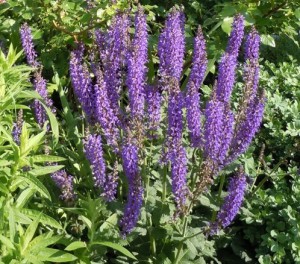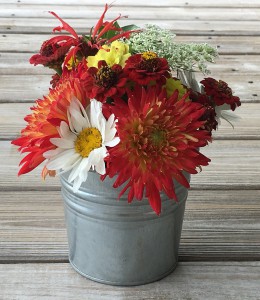
Does Your Yard’s Landscape Design Include Cutting Flowers?
Long before outdoor living became the huge landscape design trend it is today, people have enjoyed bringing the outdoors inside for centuries via flowers. Frequenting the florist can add up quickly. A less expensive and more satisfying approach would be to add some easy-to-grow perennials and flowering shrubs to your landscape design. Whether you do it yourself or hire a landscaping company, you’ll enjoyment will be twofold by adding some of these colorful plants to your yard.
Coneflowers, Daisies, Black-Eyed Susans and Blanket Flowers are all easy-to-grow perennials that are drought- and heat-tolerant, come in a range of color combinations, and make striking additions to landscapes as well as floral arrangements.
Dahlias are beautiful, showy flowers indoors and out. There are 12 divisions of dahlias and thousands of hybrids, including bi- and tri-colored blooms and they range from miniatures to decorative or “dinnerplate” in size. Their lush, full blooms are lovely in a single-flower bouquet or mixed with other flowers.
In Dallas we are fortunate to be able to consider Gerbera Daisies as a perennial you can grow in your garden. Gerbera Daisies put down deep taproots and don’t transplant well once they are established. There are many Gerbera daisy cultivars, bred for their color and flower shape (single, double or multiple petals).

Salvias or Sages are drought tolerant and feature beautiful flowers with pleasantly scented, attractive foliage. There are hundreds of different types of salvias, but they all tend to share striking, tall flower spikes and attractive, often gray-green leaves that work well in flower arrangements.
Marigolds, known for their pest resistance, these annuals are often used in landscape design because of their bright blooms that range from yellow and gold to orange, red and mahogany. Several striped, bi-color and creamy white cultivars are also available.
Hydrangeas are beautiful bushes to use in landscape design and make beautiful cut flowers with their immense flower heads. They come in a range of colors from blues, vibrant pinks, and clean whites, to lavender and rose. The colors of some hydrangeas—especially mophead and lacecap—can change color based on the soil pH. Acidic soils with a pH of less than 5.5 produce blue flowers; soils with a pH greater than 5.5 produce pink flowers. White flowers are not affected by pH.
 When cutting fresh flowers, use a sharp knife, garden clippers or shears, leaving stems a little longer than you’ll need and cut on a 45 degree slant at the bottom to maximize water absorption. Early morning is the best time to cut fresh flowers. Do not pick flowers in the heat of the day when the plant is losing moisture. It’s always best to immediately put cut stems into water, so carry a plastic bucket (metal can affect the pH balance of the water) with you to keep them in until you’re ready to arrange them in the vase. Leaves below the water line should be removed to retard bacterial growth. Use lukewarm water and add a preservative to the vase to extend the life of the flowers. For more on the best practices for cut flowers, visit Brooklyn Botanical Garden.
When cutting fresh flowers, use a sharp knife, garden clippers or shears, leaving stems a little longer than you’ll need and cut on a 45 degree slant at the bottom to maximize water absorption. Early morning is the best time to cut fresh flowers. Do not pick flowers in the heat of the day when the plant is losing moisture. It’s always best to immediately put cut stems into water, so carry a plastic bucket (metal can affect the pH balance of the water) with you to keep them in until you’re ready to arrange them in the vase. Leaves below the water line should be removed to retard bacterial growth. Use lukewarm water and add a preservative to the vase to extend the life of the flowers. For more on the best practices for cut flowers, visit Brooklyn Botanical Garden.
If you’d like help maintaining your gardens, or with a landscape design that includes some of the flowers we’ve talked about here or others, please don’t hesitate to email us or call 972-243-9673.
For over 30 years, Bonick Landscaping has served Dallas area clients with the highest standards looking for out-of-the-ordinary luxury landscape design and pools by offering the best in service, workmanship, and plantings. Services include hardscape and landscape design, pool designs, pool construction and installation, lawn care services and garden maintenance, pool maintenance, and more. For discerning clients in Dallas who want to express their own distinctive style through their landscaping, Bonick Landscaping can help you realize your dream. Call us at 972-243-9673 or visit our website at www.bonicklandscaping.com.